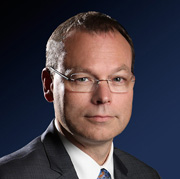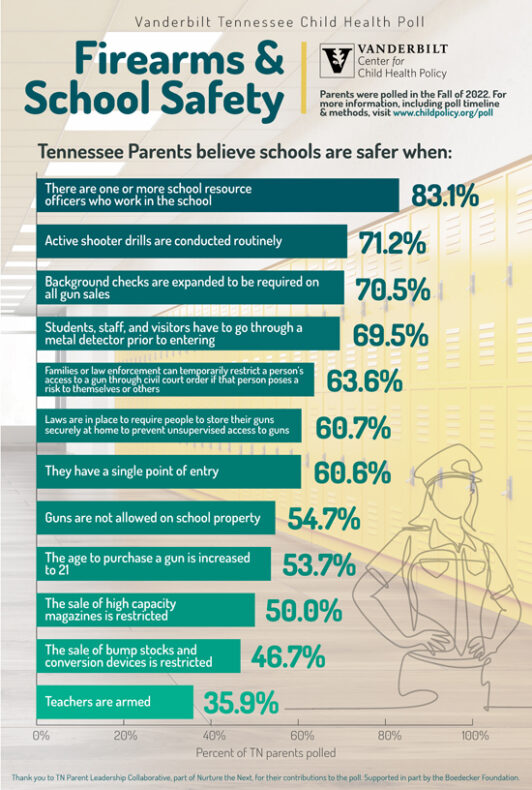As many of you know, I have spent the majority of my life at Vanderbilt. I have been a student, a faculty member, and for more than a decade have served as an administrative leader.
Growing up in this institution has given me a perspective on VUMC far richer than its impressive statistics and vast array of organizational charts. What I have come to understand is that Vanderbilt and its people share a unique and historic culture borne of a genuine affection for people, with a limitless capacity for ingenuity and personal sacrifice. I think of it as our “special sauce.”
Like all organizations, “who we are” becomes most visible — and most critical — during periods of stress. Despite nationwide reductions in payments for health care and biomedical research, our two largest revenue streams, the Vanderbilt culture has never been stronger. My recent visit to Perioperative Services in the Monroe Carell Jr. Children’s Hospital at Vanderbilt was an affirming demonstration of what our culture really means.
Entering the Rascal Flatts Surgery Center’s family waiting area is like walking into a busy hotel lobby. This gigantic room bustles as patients and their families prepare for what they anticipate will be a stressful day. Yet it is a warm and welcoming environment, filled with smiling staff, toys and books.
Every seat is taken. Already this fiscal year, more than 12,000 operating room (OR) procedures have been performed in Children’s Hospital. While some are routine, many are complex and in this region of the U.S. can only be performed at Vanderbilt. We do them all with the unparalleled experience and confidence that children and their parents really need. The atmosphere is one of high-tech precision grounded in the most cutting-edge training and research, with a gentle, warm touch.
As we experience the impact of the nation’s budget deficit through unprecedented reductions in revenue, our way forward is clear — to reduce operational costs while not only maintaining, but improving, our game. During this visit to Children’s Hospital, I experienced illustrations that made me confident in our success. A consistent lynchpin in every story I heard was teamwork and communication, always enabled by our great culture.
I learned about a new program where our pharmacists work with the entire health care team to fill a patient’s prescription at the bedside, completing the entire transaction prior to discharge. If you’re a first-time parent taking a child home after a surgical procedure, imagine what it means to have the health care team explain exactly how to use each medication, while avoiding the need to stop at a pharmacy on the way home.
Numerous OR areas are engaged in teamwork, yielding greater efficiency while reducing supply costs. Already, the Children’s surgery program has found ways to save $11,000 on one type of suture, and the list is far longer. The team has also decreased the use of office supplies by 5 percent, producing immediate financial gains. And through greater cross training of our talented OR staff, they have been able to implement more flexible staffing models that expand the utilization of our operating rooms — perhaps the most costly real estate in the Medical Center.
Another innovation not only saving costs but improving both family satisfaction and patient safety is the Preoperative Assessment and Teaching for Children’s Hospital (PATCH) clinic. Children’s Hospital is a tertiary care resource that sees the most complex patients in the region. The PATCH clinic is expert at coordinating care for children with multiple conditions requiring coordinated management during surgery. For example, through the generous support of Rascal Flatts, our new Pediatric Interventional Radiology Suite now fulfills a huge need for treating our youngest patients with complex brain diseases. These children may need a brain MRI as well as a surgical procedure, both requiring general anesthesia.
The PATCH team assures both procedures can be arranged and medically managed in a single day, under one general anesthetic, reducing risk for patients while decreasing the number of expensive trips to the hospital for families, often from long distances.
As world leaders in autism research and treatment, the challenges with performing surgical procedures on young patients with these and other developmental disabilities are extraordinary. The PATCH team has developed programs tailored to patients and families with special needs to prepare them for the surgical experience, reducing the stress of the hospital environment and improving the likelihood of a positive outcome.
The Holding Room, a place where anxiety is high for patients and families, may best capture the atmosphere engendered by these programs. The Holding Room is the OR equivalent of Grand Central Station, caring for 80 patients on a typical day, both preparing them for surgery and receiving them to recover afterward. I stood in the middle of this enormous room, surrounded by impressive technology (think International Space Station!) and patient beds encased by family members, doctors and nurses as far as the eye could see.
What struck me was the room was so quiet I could nearly hear myself breathing. Not a single child was crying. There were smiles everywhere as our staff efficiently and tenderly moved children of all ages to and from their procedure rooms — carrying them in their arms, rolling them along in tiny red wagons or walking hand-in-hand.
How many children each day have their pain under better control or remain calm and avoid tearing their surgical wound because of this ambiance? I know the improvements in quality and associated cost savings related to the calm and efficient atmosphere the Perioperative team has created and works intensely, moment-to-moment, to maintain, is staggering.
It is this kind of comprehensive innovation — getting it completely right, from supply savings to a superior atmosphere — that will yield the improvements we need to excel in a new economic environment that demands far more from us than ever before. During my visit to Children’s Hospital I saw — and felt — that resonance.
Jeff Balser, M.D., Ph.D., vice chancellor for Health Affairs and dean of the School of Medicine















